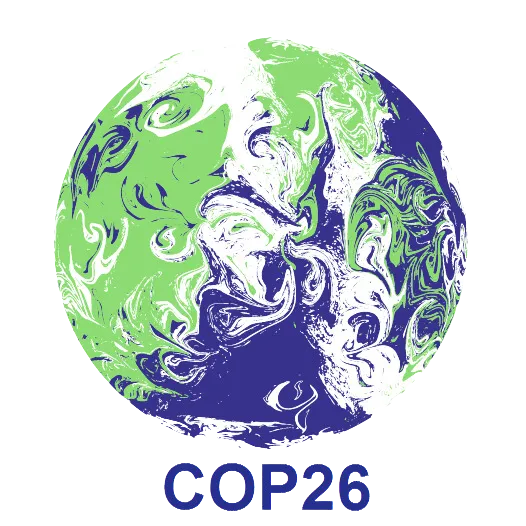Project Overview
The United Nations Climate Change Conference of the Parties (COP26) is an international summit focused on addressing the urgent global challenge of climate change.
COP26 serves as a platform for world leaders, policymakers, scientists, and other stakeholders to come together and collaborate on finding solutions to mitigate climate change and adapt to its impacts.
Originally scheduled for 2020 but postponed due to the COVID-19 pandemic, COP26 took place in Glasgow, Scotland, from October 31 to November 12, 2021. It was widely regarded as a pivotal moment for global climate action, following the Paris Agreement in 2015.
The primary objective of COP26 was to secure greater global ambition in tackling climate change and to accelerate efforts to limit global warming to well below 2 degrees Celsius above pre-industrial levels, with an aim to limit the increase to 1.5 degrees Celsius. This target is crucial for avoiding catastrophic and irreversible impacts on the planet. Influential leaders, including King Charles III, Joe Biden, Justin Trudeau, and many other activists & experts especially Sir David Attenborough, attended the conference and paved the way for a sustainable future.
COP26 showcased the power of collaboration and collective action in the face of the most pressing challenge of our time. It focused on enhancing commitments for greenhouse gas reduction and transitioning to net-zero emissions through renewable energy adoption, energy efficiency, and sustainable practices. It addressed climate change impacts by promoting adaptation, resilience-building, and providing financial assistance. Additionally, it mobilized climate finance, supports nature-based solutions for ecosystem protection, and ensured a just transition to a low-carbon economy, considering social equity and job opportunities.
Challenges
- The COP26 virtual platform faced challenges with immense traffic due to COVID-19 and limited time for testing. With high-profile users such as Ambassadors, Presidents, and Prime Ministers expected to use the platform extensively, it was crucial to ensure a bug-free and seamless experience with exceptionally good performance.
- Working with various teams in UNFCCC, Identity Group and others, it was the QA team’s responsibility to be connected with each team which proved much of a challenge in identifying, highlighting, and solving any discrepancy.
- With many more requirements and missing designs getting updated throughout the project, it fell upon the QA to fill in the gaps according to international standards and keep in mind the target audience especially the launch being set in stone.
- Participation App – (ITGL/Cisco-Webex, DAVRA-Webex Legislate, Streaming provider) included; Video Conferencing, in the room integration, simultaneous translations, request to speak, voting & access control.
- Event Platform included; Online virtual event platform, personal meeting schedule, networking with virtual participants, access to public documents, live chat support, public & observer only live streaming.
- WebEx video conferencing tool had additional features, including promotional banners, watching recorded meetings, daily schedules, and profile management, but there was no previous data available for testing. QA team had to rely on mock data, which made testing challenging. However, they were able to validate the tool’s features and ensure a seamless interactive video conferencing experience.

Solution & Strategy
The project team, consisting of skilled professionals like the Product Owner, Dev Team, Designer, Technical Writer, Test Manager and QA engineer collaborated effectively to deliver exceptional results.
- An elaborated and ever evolving QA Plan was created to tackle all the challenges at hand for both the Virtual User (Mobile & Desktop) and Admin Panel.
- All the JIRA Stories, Tasks and Enhancements were discussed with the concerned teams and scripted.
- TestRail was used to write Smoke, Functional, Non-Functional & Regression test suites which were reviewed by the PM.
- QA team showed their expertise by strategically prioritizing the functionality that required testing, giving priority to the most critical features that were completed and stable. This allowed for efficient testing and helped ensure that the product was thoroughly tested and stable for the end users.
- A few of the important areas were: Home Page, Login functionality, Authentication Permissions, Multiple Language Support, In-App Notifications, Full Conference Agenda, Current Live Sessions/Meetings, Sessions & Meetings info i.e. Date, Time, Location, Event Type, Group, Personal schedule configuration/subscription, Q&A functionality during the sessions (Web), Scheduling Language select out of the 6 from the Agenda, Virtual Lobby access, Spotlighting speaker, Meeting timers, Breakout room creation, Live streaming, On-Demand chat history, Audio feeds, Customization of user account details, Profile picture pass through, On-Demand content, View Voting results (Chair only), Consolidated voting by country to name a few
- New features were added to the testing checklist as soon as they were introduced and were tested according to their assigned priorities.
- Bugs that had already been logged and either fixed or deemed non-reproducible were given updated statuses.
- QA engineers reached out to the client or relied on their experience to clarify requirements when design files and requirements were insufficient.
- To ensure the fit for diverse user types, the team performed cross-browser, cross-platform, load testing and usability testing.
- JMeter, Blazemeter, Postman, AXE and many other tools and extensions were used to test a variety of Non-Functional areas & Performance/Load.
Conclusion
- The UN Climate Change Conference in Glasgow (COP26) was a big success considering the pandemic disruptions as it brought together 120 world leaders and over 40,000 registered participants, including 22,274 party delegates, 14,124 observers and 3,886 media representatives.
- The results of COP26, the Glasgow Climate Pact, include enhanced climate commitments, net-zero emissions pledges, phasing out of coal power, increased climate finance, focus on adaptation and resilience, recognition of nature-based solutions, emphasis on a just transition, and global collaboration for accelerated climate action.
- The team accomplished an extraordinary feat by launching the Web App within a tight deadline, showcasing their exceptional skills and dedication.
- The team’s meticulous testing and exceptional performance enabled them to uncover defects and use cases that were overlooked by the client’s internal processes, ultimately leading to the client’s utmost satisfaction with their services.

